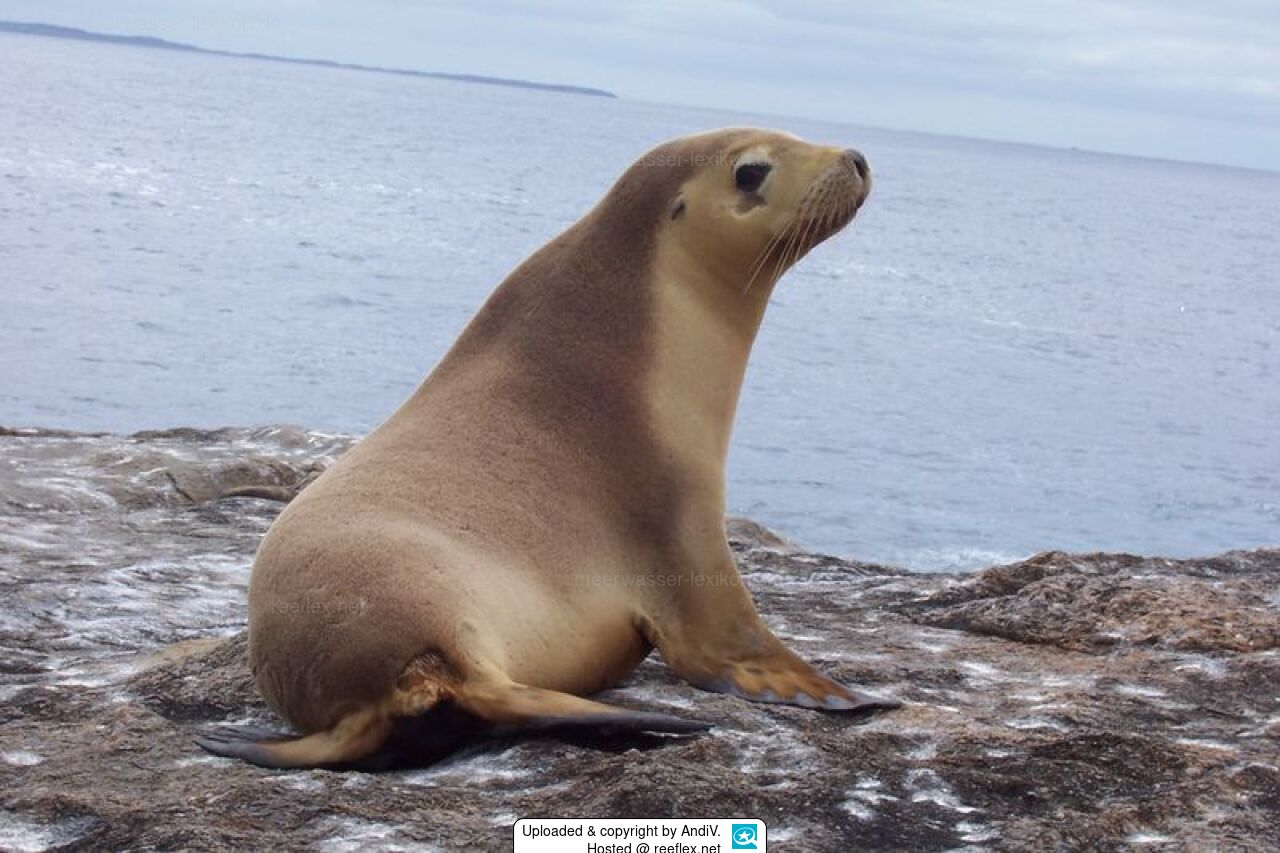Info
(Péron, 1816)
IUCN Status: rare, endangered
Distribution:
Eastern Indian Ocean: Australia.
Biology
Inhabit islands and the mainland coast, ranging over waters of the adjacent continental shelf. Feeds on a wide variety of fishes (including rays and small sharks), squid, cuttlefish, and penguins; shallow-water benthic prey).
Inhabit islands and the mainland coast, ranging over waters of the adjacent continental shelf. Feeds on a wide variety of fishes (including rays and small sharks), squid, cuttlefish, and penguins; shallow-water benthic prey.
The picture shows two Neophoca cinerea or Australian sea lion, they hide in the seaweed forests of the Tasman Sea of the great white shark, there main predator. Neophoca cinerea only live along the south and west coasts of Australia. They are the only ones of their kind, the genus Neophoca, so they are monotypic.
Source: SeaLifeBase and worms
IUCN Status: rare, endangered
Distribution:
Eastern Indian Ocean: Australia.
Biology
Inhabit islands and the mainland coast, ranging over waters of the adjacent continental shelf. Feeds on a wide variety of fishes (including rays and small sharks), squid, cuttlefish, and penguins; shallow-water benthic prey).
Inhabit islands and the mainland coast, ranging over waters of the adjacent continental shelf. Feeds on a wide variety of fishes (including rays and small sharks), squid, cuttlefish, and penguins; shallow-water benthic prey.
The picture shows two Neophoca cinerea or Australian sea lion, they hide in the seaweed forests of the Tasman Sea of the great white shark, there main predator. Neophoca cinerea only live along the south and west coasts of Australia. They are the only ones of their kind, the genus Neophoca, so they are monotypic.
Source: SeaLifeBase and worms







 AndiV
AndiV



